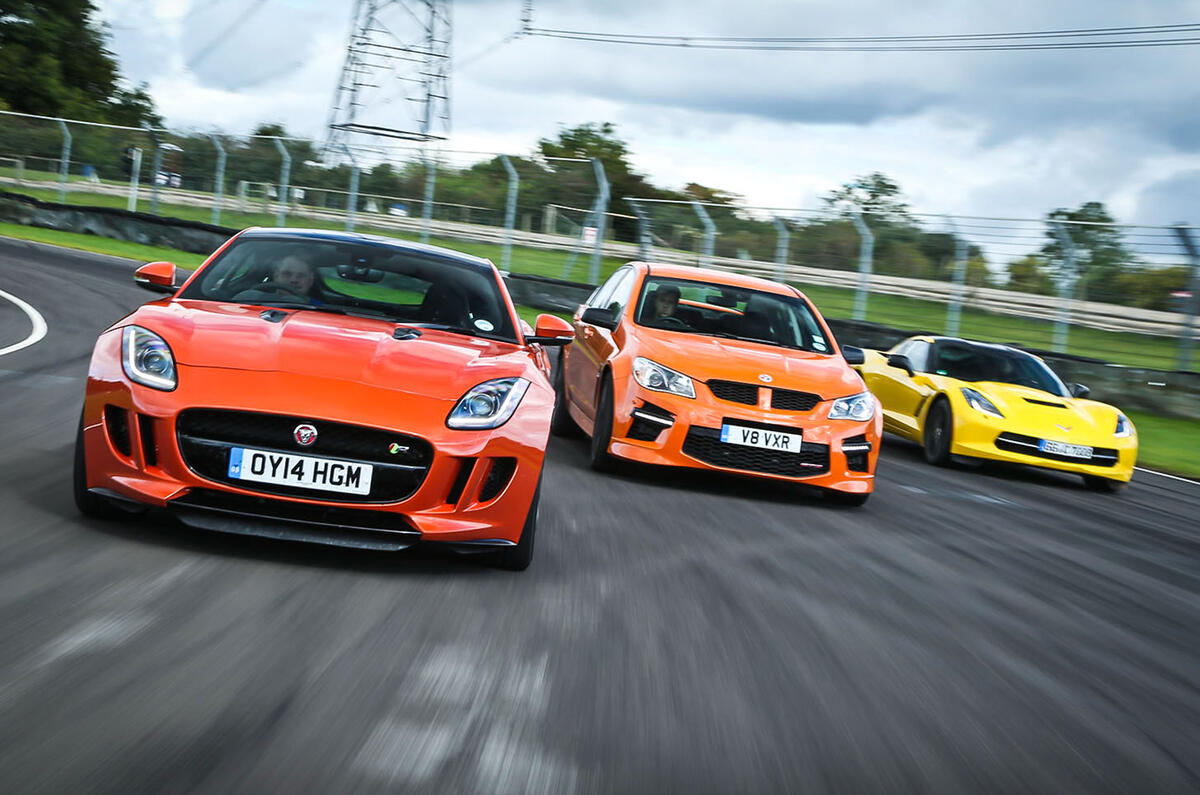Handling Day – the shorthand name for our Britain's Best Driver's Car competition – never fails to defy your expectations. The more ‘foregone’ the contending line-up seems, the greater the potential for confounded surprise.
For every underachiever, though, there is always a delightfully unpredicted ace in the pack. And nothing in the pit lane is more disappointing than prejudice.
This year, you could spot the veteran judges of these big tests by their approach to the Jaguar F-Type R coupé, Chevrolet Corvette C7 and Vauxhall VXR8 GTS in particular – all front-engined, rear-drive V8s of pretty much the oldest sporting mould of them all. Cars like this shouldn’t demand many laps to decode – should they? When one of them is half as good as it’s tipped to be and another is twice as impressive, they most certainly do.
There’s performance and burbling charisma in abundant supply here whichever car you plump for – but the biggest slice of both comes not from either small-block Chevy engine with the blue-blooded V8 lineage, but from Jaguar’s rambunctious 5.0-litre supercharged lump.
The Jaguar F-Type R's snarl isn’t just loud; it’s angry with it – predatory, even. To listen to, you’d think it produced at least 50 per cent more accelerative force than either of the American V8s. In fact, the Vauxhall-née-Holden’s 577bhp and 546lb ft give it ultimate bragging rights.
Take into account kerb weight, though, and it’s the Jaguar that tops the order, 328bhp per tonne for the Brit playing 315bhp per tonne for the Aussie and just 299bhp per tonne for the American.
Lap times aren’t always so illuminating, but look at how those power-to-weight ratios translate into circuit clockings and you’ll begin to understand where the true dynamic achievement is to be found here. Because despite it being the least brawny under the bonnet, the Corvette tied the Jaguar’s lap time to the tenth.
The Vauxhall, meanwhile, came in 0.6sec after both of its rivals – although it still had enough speed to go quicker than both a BMW M4 and a Porsche Cayman GTS.
Getting a fast lap time out of the Jaguar was no straightforward task over the bumps and around the flat, testing corners of Castle Combe. Everyone who drove the F-type came back to the pits with the same wide-eyed expression – one inspired by a car with a great deal more poke than it can use most of the time and a notable penchant for the dramatic.
“Significantly underdamped; consequently a rather wild ride” was how one judge described the experience. “Rapid, ferocious – but only if you commit to turning off the driver aids,” wrote another.
Road test editor Matt Prior summed the car up best: “It lets go everywhere –including in fourth gear, in a straight line, at 100mph. That’s less entertaining than it sounds. This is what I imagine racing a historic saloon is like.”








































































Add your comment
super